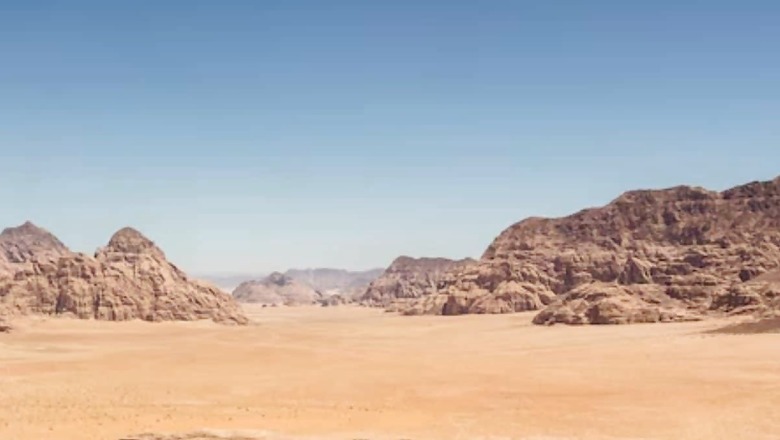
views
Archaeologists have discovered some of the crucial answers to this world. Prehistoric rock art discovered on the walls of caves and sites in the Atabai desert raised many questions. The rock art discovered in the area tells a different tale than what is known. According to the archaeologist, the art is around 4 thousand years old. What astonished the archaeologists was the environment of the Sahara portrayed in the art.
As portrayed in the artwork, the arid region looked very different than it is now. The whole area was covered with bushes and trees. It had water, too. Astonishingly, animals were seen in the art as well. The artwork suggests that the whole idea went through major changes. However, the transformation of the area did not happen in a short time. It took a few millennia.
Archaeologists at Macquarie University mentioned the 16 rock art sites that were discovered in the deserts of northern Sudan. It was found in Wadi Halfa town, which is close to the border with Egypt.
Interestingly, humans, elephants, giraffes and antelopes are portrayed in those artworks. Ataba, which was not a desert, according to the findings, had cattle once upon a time.
Researcher Dr Julian Cooper informed us in a statement, “The presence of cattle in ancient rock art is one of the most important pieces of evidence establishing a once ‘green Sahara’.” He also added that the Ataba Desert around Wadi Halfa became completely depopulated. Few residents remained, and they abandoned their cattle.
The current scenario, in contrast with the artwork, surprises everyone, as there is no annual rainfall in the desert. In 3000 BC, animal husbandry was common and a part of the daily lives of local people.
According to the researcher, it is surprising to see images of cattle carved into the walls, for which acres of pastureland and a lot of water are needed. He said, “This would have had major ramifications on all aspects of human life, from diet and limited milk supplies to the migratory patterns of herding families and the identity and livelihood of those who depended on their cattle.”
According to the researchers, rainfall across the continent of Africa was much greater than what Africa receives now. Five thousand years ago, due to variations in the orbit of Earth around the Sun, Africa received this increased rainfall.


















Comments
0 comment